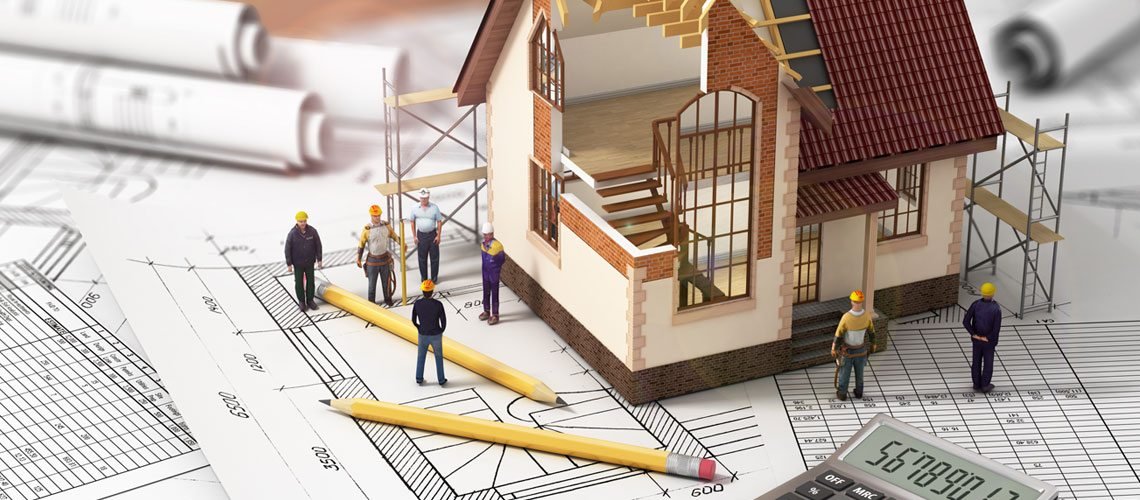Can You Get a Construction Loan for a Remodel? 2025: Remodeling your home can be an exciting and rewarding process, but it often comes with a hefty price tag. Whether you want to update your kitchen, expand your living room, or transform your basement, the costs of renovation can add up quickly. For many homeowners, securing financing for a remodel can be a challenge, and this is where construction loans come in.
But can you get a construction loan for a remodel? The answer is yes! In fact, a construction loan can be an excellent option for homeowners looking to fund home improvement projects. However, understanding the ins and outs of construction loans and how they work is essential to make sure you’re making the right decision for your remodel.
This blog will guide you through everything you need to know about construction loans for remodeling projects. We’ll cover what a construction loan is, how it differs from a regular mortgage, the types of construction loans available, the requirements, and tips for securing one. By the end, you’ll have a clear understanding of how to leverage a construction loan to finance your home remodel.
What is a Construction Loan?
A construction loan is a short-term, high-interest loan designed to fund the costs of building or remodeling a home. Unlike traditional mortgages, which provide financing for purchasing a home, a construction loan is specifically used for home improvements or new construction. These loans typically have a term of 6 months to 1 year, and they are paid out in stages as the construction work progresses.
When applying for a construction loan, the lender will evaluate the project’s total cost, your creditworthiness, and the value of your home (or the value after the remodel). The funds are dispersed based on the progress of the work, with the lender conducting periodic inspections to ensure everything is on track.
Once the remodeling project is complete, the construction loan is usually converted into a permanent mortgage, often called a “construction-to-permanent loan.” This allows you to spread out the cost of the remodel over a longer period, typically 15 to 30 years, and at a more favorable interest rate.
How Does a Construction Loan Differ From a Traditional Mortgage?
While both construction loans and traditional mortgages involve borrowing money to finance real estate, there are some key differences between the two:
- Purpose:
- A traditional mortgage is used to purchase a home or refinance an existing mortgage.
- A construction loan is used specifically to fund the costs associated with building or remodeling a home.
- Disbursement of Funds:
- With a traditional mortgage, the funds are disbursed in a lump sum, and you begin repaying the loan immediately.
- With a construction loan, the funds are released in stages as the remodeling or building project progresses. These stages are often referred to as “draws,” and the lender will release funds after each phase is completed.
- Interest Rates:
- Construction loans tend to have higher interest rates than traditional mortgages because they are considered riskier for lenders due to the short-term nature of the loan and the unknowns involved in construction.
- Traditional mortgages generally have lower, more predictable interest rates, especially for fixed-rate loans.
- Loan Term:
- A construction loan is usually short-term, with a repayment period of 6 months to 1 year.
- A traditional mortgage typically has a much longer repayment term, often 15 or 30 years.
- Repayment:
- With a construction loan, you usually don’t make full payments until the construction is finished. During the construction phase, you may only be required to make interest-only payments on the loan.
- With a traditional mortgage, you start paying off both principal and interest as soon as the loan is disbursed.
Types of Construction Loans
When considering a construction loan for a remodel, it’s important to know that there are a few different types of construction loans available. The type you choose will depend on the scope of your remodel and your financial situation.
- Construction-to-Permanent Loan:
- This type of loan combines a construction loan with a permanent mortgage. It’s one of the most popular options for homeowners remodeling their homes because it allows you to secure financing for both the construction phase and the long-term financing once the remodel is complete.
- After the remodel is finished, the loan is converted into a traditional mortgage, and you begin making regular payments.
- This type of loan is ideal for those looking to finance a major remodel and prefer the convenience of one loan for both the construction and long-term mortgage.
- Stand-Alone Construction Loan:
- A stand-alone construction loan is a short-term loan used only for the construction phase of the remodel. Once the remodeling is complete, you would need to refinance the construction loan into a permanent mortgage.
- While this option gives you flexibility, it can also be more time-consuming and costly, as you will need to apply for a new mortgage once the project is finished.
- FHA 203(k) Loan:
- If you’re looking to remodel a home with a limited budget, the FHA 203(k) loan may be a good option. This government-backed loan is designed for homeowners who want to make renovations to their homes but may not have the financial means to pay for the work upfront.
- The FHA 203(k) loan combines the costs of the property and the remodeling expenses into one loan. It’s ideal for smaller remodels and repairs, such as updating kitchens or bathrooms.
- Home Equity Line of Credit (HELOC):
- A HELOC is another financing option for home remodels, though it’s not technically a construction loan. A HELOC allows you to borrow against the equity in your home, using it as collateral.
- While HELOCs can be more flexible and have lower interest rates than construction loans, they may not provide enough funding for larger remodeling projects. Additionally, the amount you can borrow is based on the equity you have in your home.
Requirements for Getting a Construction Loan for a Remodel
Lenders have specific requirements for borrowers seeking a construction loan for a remodel. These requirements may vary depending on the type of loan, but some general factors include:
- Credit Score:
- A good credit score is essential to qualify for a construction loan. Most lenders require a credit score of at least 620, though a higher score (700 or above) may increase your chances of securing better loan terms.
- Equity in Your Home:
- Lenders will typically want to see that you have sufficient equity in your home before approving a construction loan. The amount of equity needed depends on the type of loan, but generally, you should have at least 20% equity in your home.
- Income and Employment History:
- As with any loan, lenders will assess your income and employment history to ensure that you can afford the loan payments. You will need to provide proof of steady income, such as pay stubs or tax returns.
- Detailed Renovation Plans:
- A detailed plan for the remodel is crucial for getting approval for a construction loan. Lenders want to know how much the project will cost, what improvements will be made, and how long the project will take. You may need to provide architectural drawings, contractor bids, and a project timeline.
- Appraisal:
- Lenders will often require an appraisal of your home to assess its current value and the potential increase in value after the remodel. This helps them determine the loan amount you qualify for.
How to Secure a Construction Loan for Your Remodel
Here are some tips to increase your chances of securing a construction loan for your remodel:
- Prepare Your Finances:
- Make sure your credit score is in good shape and that you have sufficient equity in your home. Gather all necessary documentation, including proof of income, tax returns, and a detailed renovation plan.
- Choose the Right Type of Loan:
- Consider the scope of your remodel and your financial situation when choosing a construction loan. If you need long-term financing, a construction-to-permanent loan may be the best choice. For smaller projects, an FHA 203(k) loan or a HELOC may be more suitable.
- Work with a Reputable Lender:
- Choose a lender with experience in loans of construction and home remodeling projects. It’s essential to find someone who understands the complexities of financing home renovations.
- Hire a Professional Contractor:
- Having a licensed and experienced contractor can help demonstrate the feasibility and professionalism of your remodel. Lenders are more likely to approve a construction loan if the project is being managed by a reliable contractor.
- Stay Organized:
- Be prepared to provide detailed documentation and project plans to your lender. The more organized you are, the smoother the loan application process will be.
Conclusion
In conclusion, obtaining a construction loan for a remodel is certainly possible, and it can be an excellent way to finance your home renovation project. By understanding the different types of construction loans, meeting the necessary requirements, and preparing your finances, you can secure the funding you need to bring your remodeling dreams to life. Whether you choose a construction-to-permanent loan, an FHA 203(k) loan, or another financing option, the right loan of construction can make your remodel both affordable and achievable.




